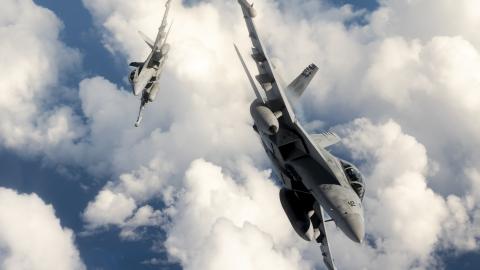The appearance of a Chinese high-altitude balloon above the United States constitutes the latest move in China’s “gray-zone” efforts to undermine its rivals’ sovereignty and improve Beijing’s wartime advantage.
The United States should learn from China’s gambit and respond in kind.
For more than a decade, China has taken control of the South China Sea not with gunboats, but with a vast fishing fleet. Combined with Beijing’s island-building, the maritime militia gives China de facto control over critical international transit lanes. In recent years these efforts expanded to support illegal fishing in other countries’ waters and sensitive ecological areas.
In this context, the balloon can be seen as the first in what could be many such deployments as China seeks to degrade US control over its skies. Moreover, by offering closer looks than surveillance satellites, the balloon can provide Chinese leaders new intelligence on America’s nuclear ballistic-missile silos, bomber bases and communications networks.
China says the balloon went off course and wandered into US airspace. This is unlikely, as stratospheric balloons have been in operation for decades and have well-understood and robust control mechanisms.
While not precise, stratospheric balloons like those made by US company Raven Aerostar for the Pentagon and Google can steer by adjusting their altitude, accessing winds of different speeds and directions that exist at various heights. This technique enables the balloons to maintain station within a few hundred miles of a ground location.
Responding to the balloon now that it’s in US airspace is not easy. Although fighter aircraft could shoot it down with missiles, balloons do not present strong targets for radar or infrared missile seekers. And fighters generally cannot fly high enough to shoot the balloon with their machine guns.
Air-defense systems like the Patriot can reach high altitudes and see very small targets, but would generate debris from the missile and the balloon that would come down over a wide area, potentially causing damage like that from an air-defense missile that recently landed in Poland, killing two bystanders in their home.
Given these challenges, the US military should instead focus on preventing the balloon from sending data back to China until it can be brought down in a safe area, such as over the Great Lakes or at sea. Electronic-warfare systems like those on Air Force EC-130H Compass Call or Navy EA-18G Growler aircraft could jam the balloon’s communications.
At higher powers, these systems, or high-power microwave weapons like that on the CHAMP missile, could damage the balloon electronics. When the balloon reaches a safe location, it could be shot down, as future balloons should be once they broach US airspace but before they reach US shores.
The most important lesson for the US military, however, is that it’s time to respond in kind.
The Pentagon has experimented with stratospheric balloons in the past, but this deployment shows the difficulty they present to an enemy. Persistent, solar-powered and able to carry radios and sensors, balloons could give US forces the ability to more closely peer into Chinese airspace and territory in peacetime and create new sources of uncertainty for Beijing. In wartime, balloons could replace the capabilities provided by satellites.















